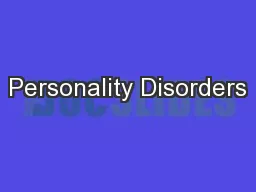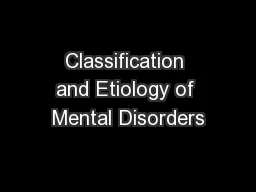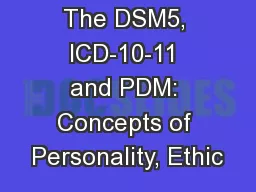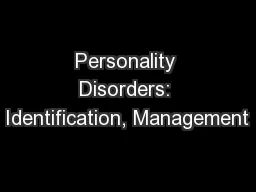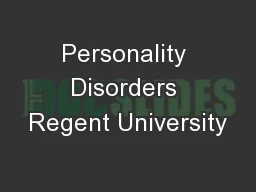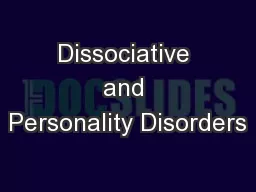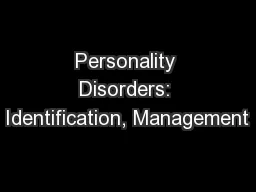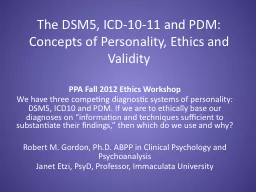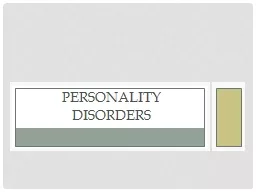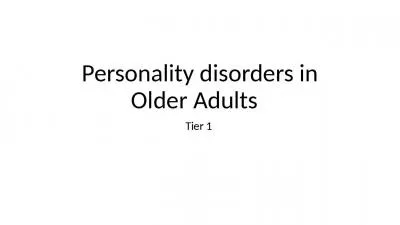PPT-Personality Disorders What are personality disorders?
Author : lam | Published Date : 2022-02-15
Maladaptive variations or combinations of normal personality traits Extremes on either end of specific trait dimensions can be associated with disorders An enduring
Presentation Embed Code
Download Presentation
Download Presentation The PPT/PDF document "Personality Disorders What are personali..." is the property of its rightful owner. Permission is granted to download and print the materials on this website for personal, non-commercial use only, and to display it on your personal computer provided you do not modify the materials and that you retain all copyright notices contained in the materials. By downloading content from our website, you accept the terms of this agreement.
Personality Disorders What are personality disorders?: Transcript
Download Rules Of Document
"Personality Disorders What are personality disorders?"The content belongs to its owner. You may download and print it for personal use, without modification, and keep all copyright notices. By downloading, you agree to these terms.
Related Documents


